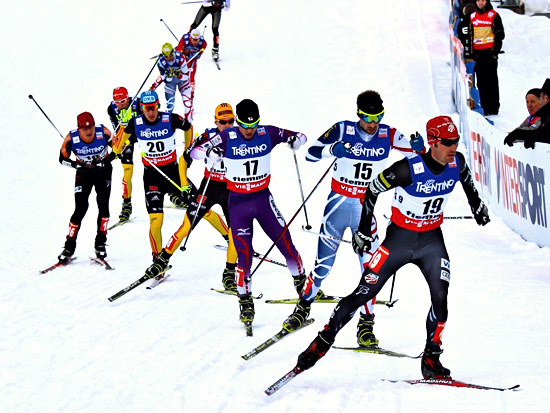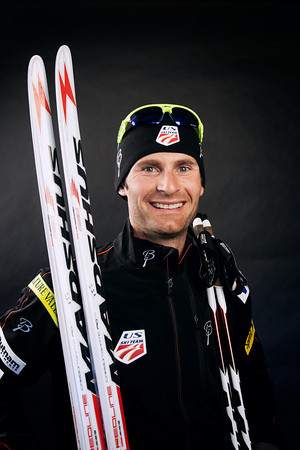Fall has arrived! As cycling and triathlon seasons near their end, we can't help but examine our overall performance this year to evaluate whether we accomplished our goals or were left hoping for better. And as we reflect on our successes and failures we subconsciously begin planning for next season.
We athletes often get caught up in the emotion of the previous season’s highs and lows and eagerly get back on the bike or start running too quickly and too often. Sometimes we get lucky and the early hard work causes the proper adaptation, but just as often we find ourselves injured because of the early load, laid up in forced time off of training for the injury to heal. Sometimes we hit our peak fitness before the next season even begins, and I think we all know how the race season goes after that.
Unfortunately sometimes it’s our own motivation that beats us down the most, leaving us physically and mentally exhausted. It’s important to remember that injuries, overuse, and general fatigue from the previous season need time to heal in order to handle new stress and to maximize adaptation from training.
Cross training is certainly not a new idea, but it’s often forgotten about or neglected by many athletes. When built into a plan and executed accordingly, the right cross training can make the difference you’ve been looking for.
Choosing your cross training
There are some important things to consider when building cross training into your program. What are the physical and mental attributes of your sport? What does it take for you to get to the top? Where do you need strength, or where don’t you need strength? Is it mostly aerobic or anaerobic? Is it individual or team based?Once you have these factors outlined, then look at other sports and try them to see if you find similarities between the two. Remember, you’re not trying to actually replace your training; it should be similar, but not exact. The slight differences are what make cross training great. Those differences create the break that your muscles and mind need to recover and recharge for your next phase of training.
In my career as a Nordic combined athlete, I’ve used cycling as cross training for the cross-country portion of my sport. I started road biking at the age of 16 to help with some knee problems I was having at the time, not realizing it would become my annual routine for many years to come. I currently race bikes April through July for a shop in Park City, Utah, called ColeSport. After my personal bike-racing season, I phase into more specific cross-country training. I truly believe that the addition of cross training to my plan has helped me to reach the Olympics, to earn a World Championships medal, and to find myself on the top of the World Cup podium.
Why cross-country ski?
Cycling and cross country skiing are a great cross training combination, and I’d like to tell you why I believe all cyclists should be cross country skiing in the off season.Similarities with cycling
Let’s start with a review of some attributes that make a great cyclist. The first attribute is power. A cyclist needs to have leg strength and be able to push a significant amount of watts for an extended period of time. To push a high wattage, we need specific strength, endurance, a fairly high VO2Max, and a lean physique. The second attribute a cyclist needs is stabilizing strength. After all, your core is what gives you leg strength to push the pedal, and if your hips are weak, the power transfer from your core to your legs to the pedal is not going to be as efficient as it should be. Strength in your core and hips can help dramatically. A cyclist also needs to be mentally sharp to avoid potholes, surges, breaks in the peloton, and of course other crazy riders. Finally, a cyclist should try to avoid gaining excess mass, especially in the upper body.Triathletes have slightly different needs in regard to body build, but for the most part they’re very similar to cyclists.
Cross-country skiing requires many of the same attributes as cycling: lean muscle mass; leg, hip, and core strength; and the mental agility to avoid skiers, changing snow conditions, and fast descents. It requires some upper body strength but not a ton; the fastest skiers have nothing in excess of what they need for upper body strength.
Valuable differences from cycling
After a simple dissection of the three sports, we can see they’re very similar. It’s the slight differences that give us an advantage, however. In an effort to keep it simple, here are some of the top reasons why you should use cross country skiing as cross training for your sport.One of the best reasons to cross train is that it is mentally refreshing and fun to do something different while still working toward your end goal, and cross-country skiing certainly fits the bill here. Instead of being stuck in the dungeon where your trainer and roller hide, embrace the snowy conditions, get outside, and ski! If it helps, pretend it’s a spring classic race in a snowstorm and you’re in a solo break: it’s yours to win or yours to lose! Regardless of what motivates you, mixing up those indoor trainer rides with cross training will make it a bit easier trying to make that 90, 120, or even 180 minute mark in the dungeon. Your saddle sores will thank you, too!
Another reason to cross-country ski is that it uses the same muscle groups as cycling (glutes, quadriceps, hamstrings, calves, back, core etc.), but in a different way. This is important because it helps maintain strength and endurance in these areas, and the slightly different use pattern can strengthen weakened areas as well, which can help prevent overuse and promote some healing within the muscles. Using the same muscles in a different way may help to bring back some of the strength you lost during the long racing season (this is especially true for core, hip, and back strength). Adding strength to these areas can go a long way toward preventing injury.
If you did sustain an injury during the season, speak with your physical therapist about adding cross-country into your recovery and rehab plan. It can be a great stepping-stone in your transition back into running, and it can add mobility and strength to an injured shoulder, back, or knee.
Another reason to get out of your pain cave and into the snow is to get back in touch with your heart rate and lactate threshold. Cross-country skiers have long wished for a method of power training, but due to changing snow conditions, techniques, and weather, exact force is not an option for us. We have to rely on heart rate and lactate threshold to gauge our exertion. As a result, you will find that cross-country/Nordic combined skiers are pros at knowing our bodies and our corresponding heart rate zones. As you get out to cross ski, you’ll probably find yourself looking at your heart rate monitor a lot more. The main reason you’ll do this is efficiency; if you’re new to cross-country skiing, you’ll find that it’s very hard to be efficient, and using both arms and legs at the same time requires full body efficiency, which causes a higher heart rate. As you master the technique of skiing while using both arms and legs together, you’ll gain efficiency and your heart rate will lower. Soon you’ll find yourself gliding blissfully across the course with a low heart rate, enjoying every second of it. In the process you will learn your heart rate zones. If you have access to a lactate-measuring device, it’s really helpful to use it to stay in the correct zone; this will give you a visual of the correlation between heart rate and lactate. Most importantly, you’ll see how heart rate and lactate function for you as an individual. You’ll quickly come to know your work output level like the back of your hand.
Last but not least, cross-country skiing will give you the opportunity to rejoin your social racing routine despite the fact that cycling season is over. I know you don’t have anything to do with your weekends, so hallelujah! Find your local cross-country clubs and take in some weekend races or town challenge circuits. You’ll find great people all around, and a fun time is had by all. This is also a great way to meet people with a passion for the sport who can help you with your equipment questions and skating or classic technique. Who knows, they might even provide some waxing insight!
Regardless of which of the many reasons attracts you most, I encourage you to get out there and try cross-country skiing this year. Your next season will be better for it.
Whether you're an experienced skier or adding it to your training for the first time this year, we can take you to the next level! Contact us today to find out how training with the best of the best can make the ultimate difference for you.
Bryan Fletcher is an Olympian, a world champion, a national champion, a USAC Level 3 coach, a cancer survivor, and a Peaks Coaching Group associate coach. He and his fellow PCG coaches create custom training plans for endurance athletes of all levels of experience. Bryan can be contacted through peakscoachinggroup.com or through info@peakscoachinggroup.com.
Image credit: PCG coaching Bryan Fletcher in the lead










